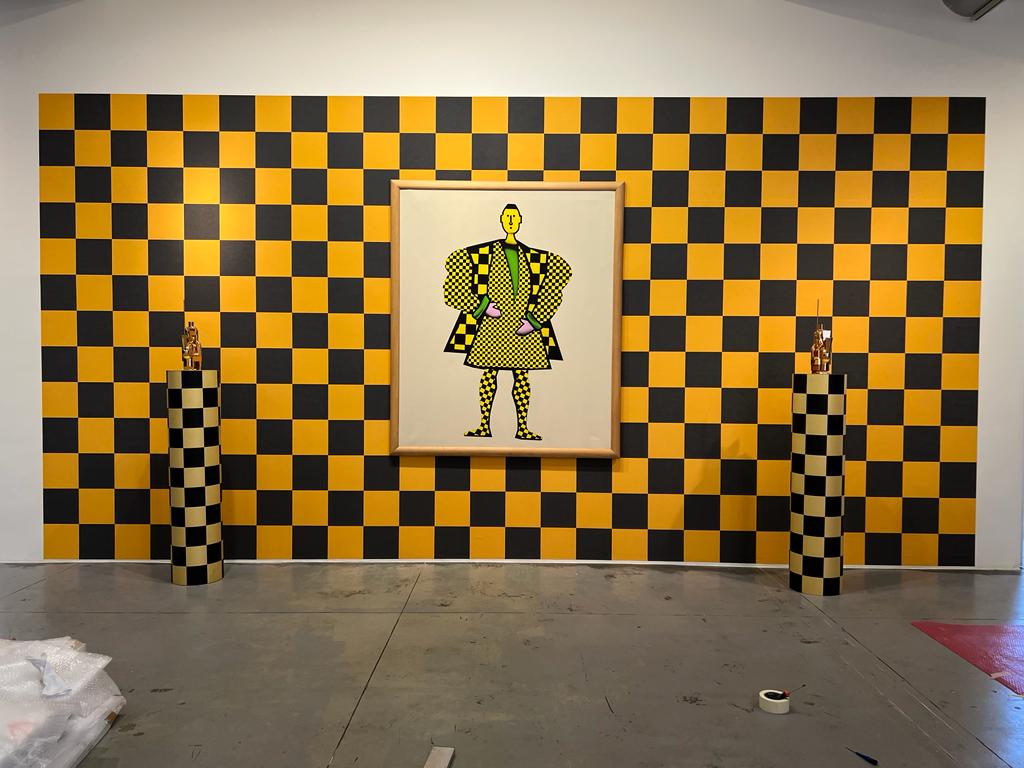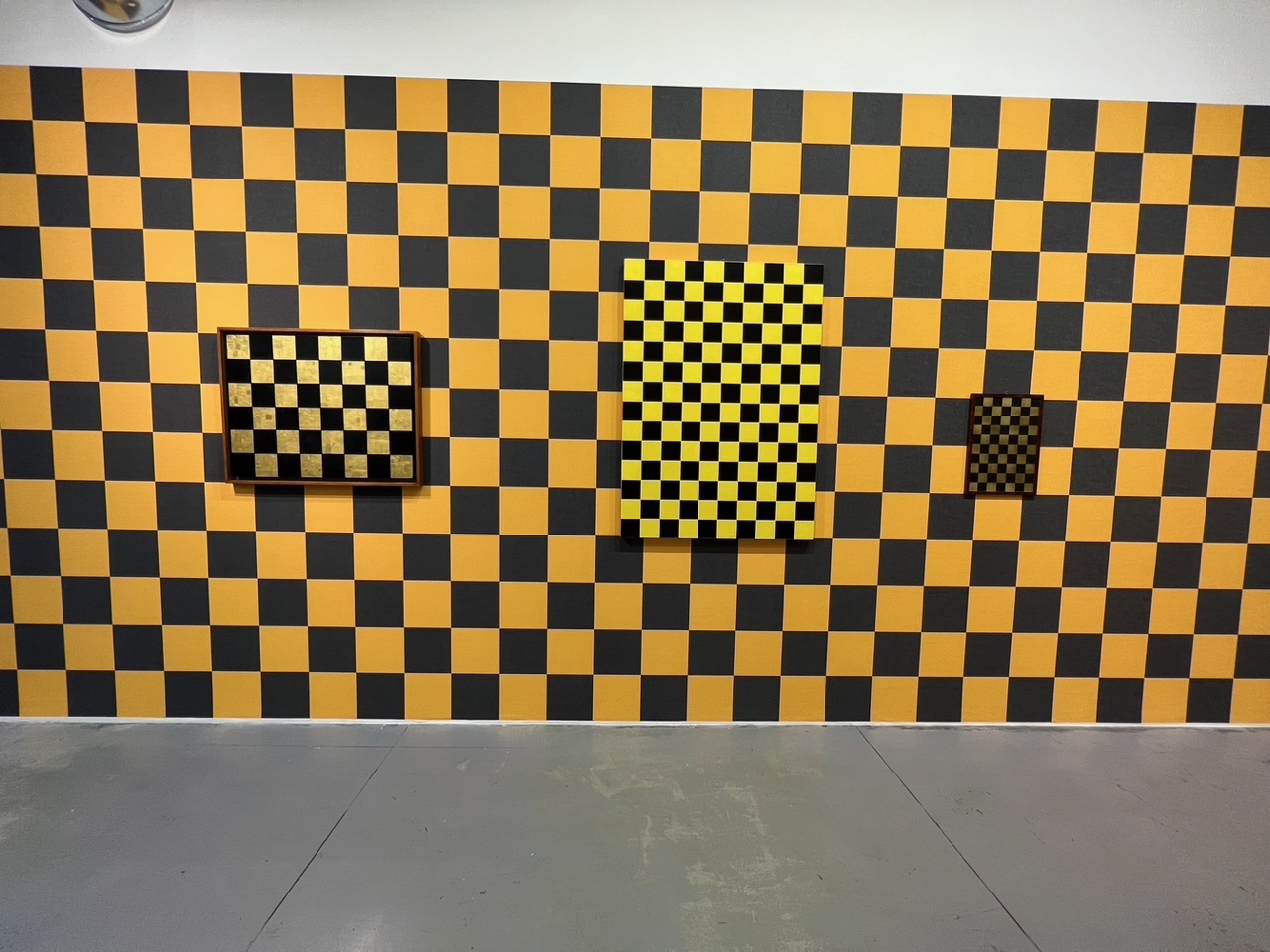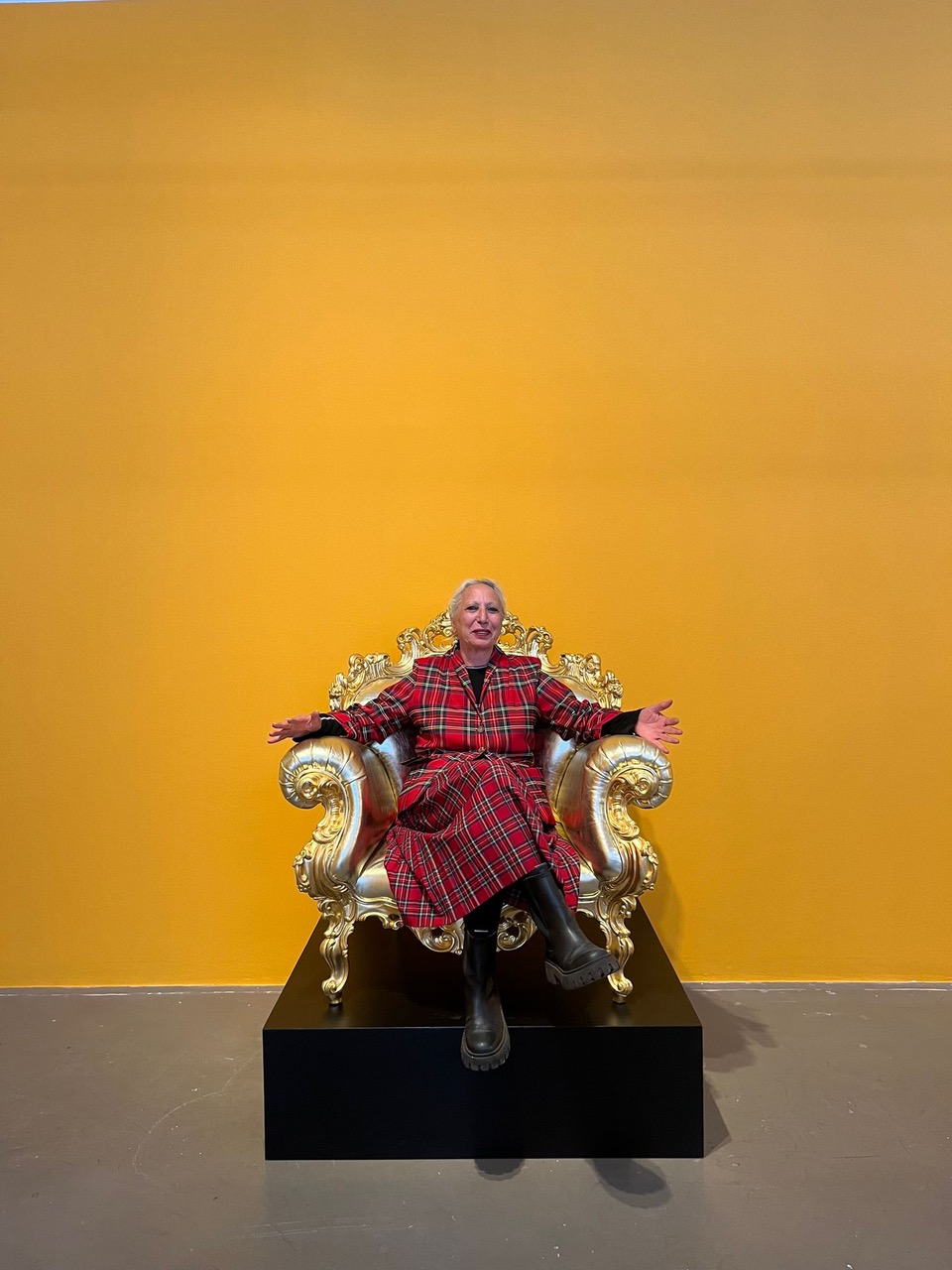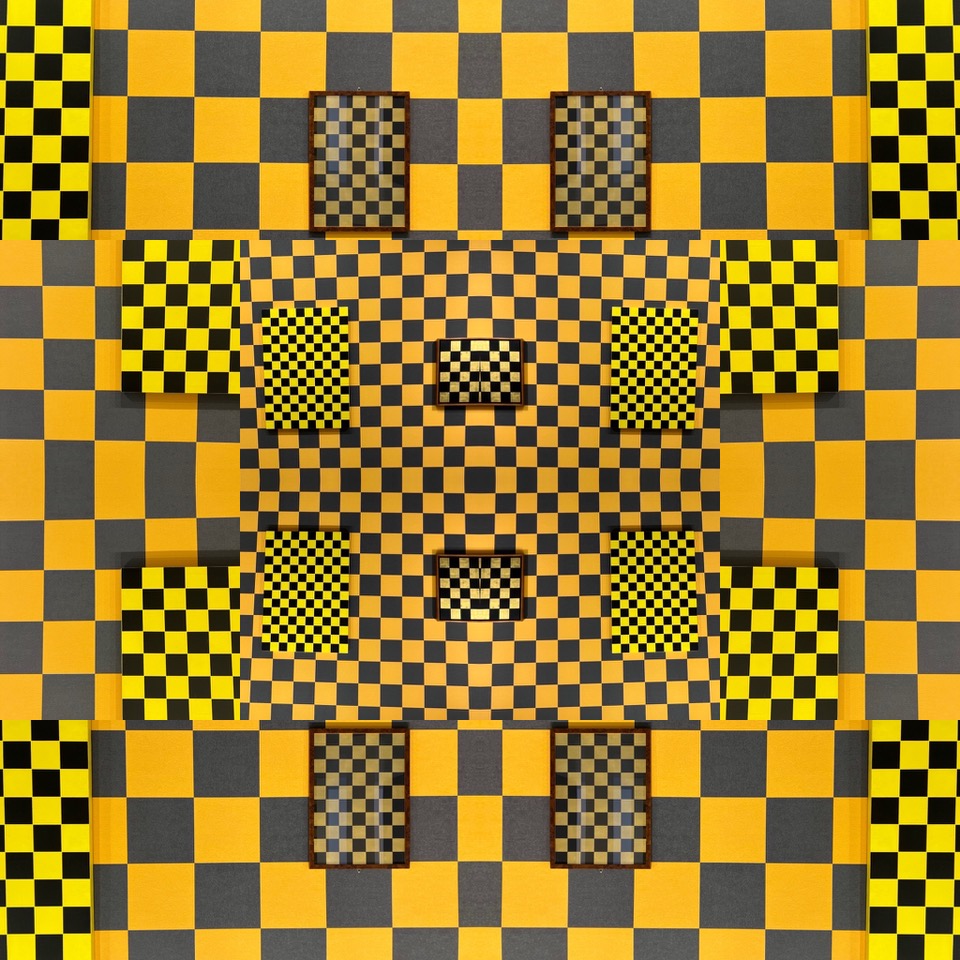
05 Jun L’era dei metalli, curatela per la mostra di Alessandro Mendini
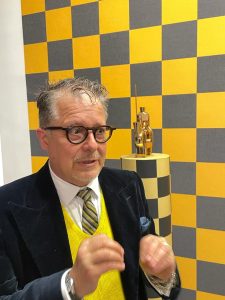
TO SQUARE THE CIRCLE
During my research on Alessandro Mendini a memory kicked in, that sparked the idea of how to the approach to the exhibition. I was taken back to my first encounter with Alessandro Mendini in 1984, when I was studying and conducted an interview with him for my phd.
Later when I moved in the design scene, on my inaugural visit to the Salone in 1989, I was invited to visit a performance in the new headquarters of Mendini, which had a huge impact on me. This signaled the start of my adventure in the design.
LEONES: INSTANT MARKET, 1989
“During the Salone del Mobile in Milan, a short action entitled “Leones: instant market” will be made at my studio.
Young merchants from Senegal will sell Louis Vuitton and Lacoste fakes processed and signed by me. A tough but apt action to highlight the terms of an important issue. In fact, today more than ever, it is not enough to care about the validity of individual objects per se, understood as an enticing element towards the consumer. It is not enough to know whether an object, in its display, is more or less successful. It may perhaps even be false; it does not matter. What needs to be highlighted are the basic equations in the overall dynamics of commodities: in the relationships between object, production, sale, image, use, economic structures and social responsibilities. What is new in design is played out in the transformation of these complicated equations, not in the formal language of objects. It is like a dense forest of paths connecting cultural, industrial and behavioural phenomena that are very contrasting even in their underlying ideas. Certain formulas on which the characteristics of this forest have stood for years are in decline; other energies appear on the paths instead. Grassroots changes pass as much through the streets of the rich as through the streets of the poor, as much in designated places as through improper routes.
Possible markets are many, but if I look for one full of fascination I think of that of the Leones: the thousands of squatter and minimalist markets that multiply on the sidewalks of megacities are an important symptom of the realities in the field, possessing that mythic archaism not only political but also technical, within which it is good to investigate even as planners. It is known that particular bottlenecks and anomalies often conceal secrets capable of regenerating much larger problems. These Leones, young merchants with risky activity, are a limiting and paradoxical example: they sell a kind of denunciation, a false myth, the false brands, the symbols of the mistaken illusions of Western society.
I formulate a hypothesis here: may there arise systems of objects to be attributed “exclusively” to this market, produced with dignity, the resources, meanings, signs and materials of the countries of origin.
Real and original brand names that restructure the cycle of these sci-fi ultra-world markets with a human face. That give identity to those who produce, those who sell, those who buy.”
Leones: Instant Market, Atelier Mendini, Milan 1989.
The prelude to this performance was orchestrated by the lawyer of Lacoste threatening to sue Mendini for selling fakes. He responded, that this would actually be of huge benefit as it would negate his need for a PR. Lacoste donated 200 original shirts that were sold as fakes, elaborated on and signed by Alessandro.
The public that came to the performance bought different items and he fixed a plastic badge on it and signed them. The badge was a square with yellow and black squares just like the quarantine flag on a ship. This had an impact on me, and when asked by the Gallery M77 to curate the Mendini show for the Salone 2023, it jumped back into my mind. As yellow can easily become gold and be as bright as white I started to study the mysticism behind this color combination. I understood that for Mendini the yellow and black check had vast historical and anthropological symbolism.
The year following ‘Leones: instant market’, in 1990, Mendini dedicated his next show to Shama a close collaborator that had passed away during the preparations for the original exhibition. Shama had been a very spiritual person with a commitment to creativity and thorough research just like Mendini. In this homage, in the ‘Shama’ exhibition every item in the room was covered with the same check pattern.
The message was clear and repeated several times. He was giving us a warning sign; as much as consuming provides gratification, it also can destroy the soul. From the warning signs on ski slopes and in airports, to decoration in Balinese Temples and the prayer carpets of Tibet – all in this check pattern – showing the forces of opposites. Mendini checked a bus stop in Hannover, Germany in 1992, which seen from a great distance away which commands our attention. The Steintor stop looks like a medieval gate and has the heraldic reference to the Habsburg family.
Its pinnacle is reached in a dedicated room in the Museum of Groningen (1988-94) which was plays with different scale checks, flashing his warning sign.
Museum of Groningen (1988-94)
In an earlier period, Yayoi Kusama focused on different pattern; polka dots which have obsessed her throughout her career. She imagined herself to be one of many particles, articulated with a visually intensity. Her obsessive-compulsive disorder gave her a very particular vision of the world, one of the cosmic world and the philosophy of the absolute.
“One earth is like one little polka dot, among millions of other celestial bodies, one orb full of hatred and strife amid the peaceful, silent spheres. Let’s you and I change all of that and make this world a new garden of Eden. Let’s forget ourselves, dearest Richard, and become one with the Absolute, all together in the altogether. As we soar through the heavens, we’ll paint each other with polka dots, lose our egos in timeless eternity, and finally discover the naked truth. You can’t eradicate violence by using more violence.” Yayoi Kusama
Infinite dots defined her artistic vocabulary, leaving us an immense body of work. From the
from the first mirror room in 1965, she spoke of a language of opposites. Mendini always conscious of the contemporary global art and design scene and marketing machine, provocatively chose to subvert the system, presenting his version of opposites with dramatic interventions.
After Louis Vuitton using her patterns infinitely, the analogy came to my mind. Alessandro came from a rational point of view, attempting to fight status symbols historically tied to white masculine status; which is now subverting to wider cultural tribes and a more diverse economic audience. Whereas, Yayoi Kusama expressed an emotional visual language, from her own very personal inner vision of the world, now which has been adopted by the one of the highest luxury brands. One could question if Kusama does in fact have a mental illness, or is it society?
Mendini used the check pattern to question brands, while Kusama’s inner vision has been harnessed commercially in order to sell luxury product. Not that I see her as a victim, but as an observation of how patterns are created and their powerful effect on people.
Both creatives repeated their mantra consistently throughout their careers, pushing us to question the status quo. It is with this irony that we ask ourselves are we squaring the circle or circling the square?
Stephan Hamel, 2023

